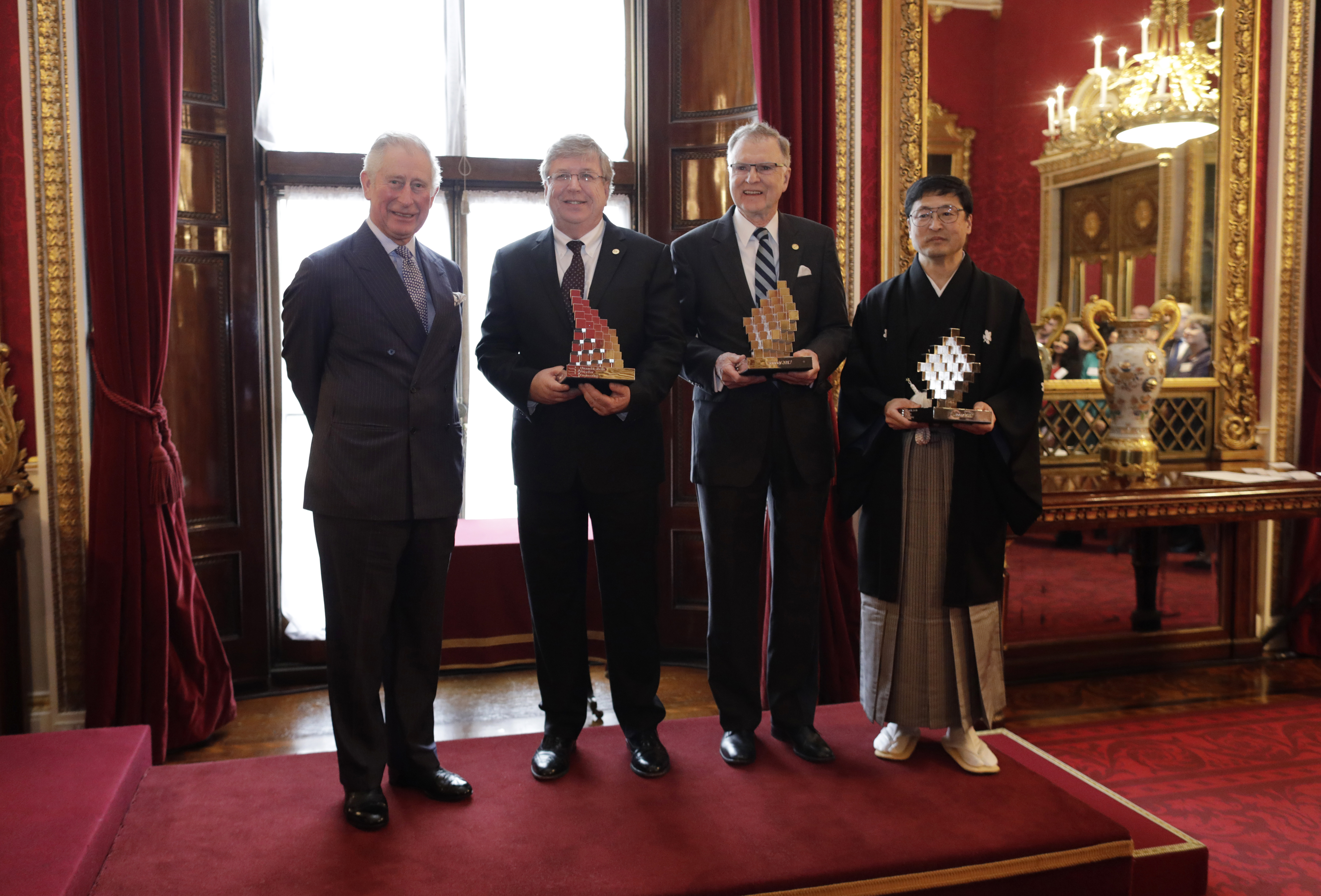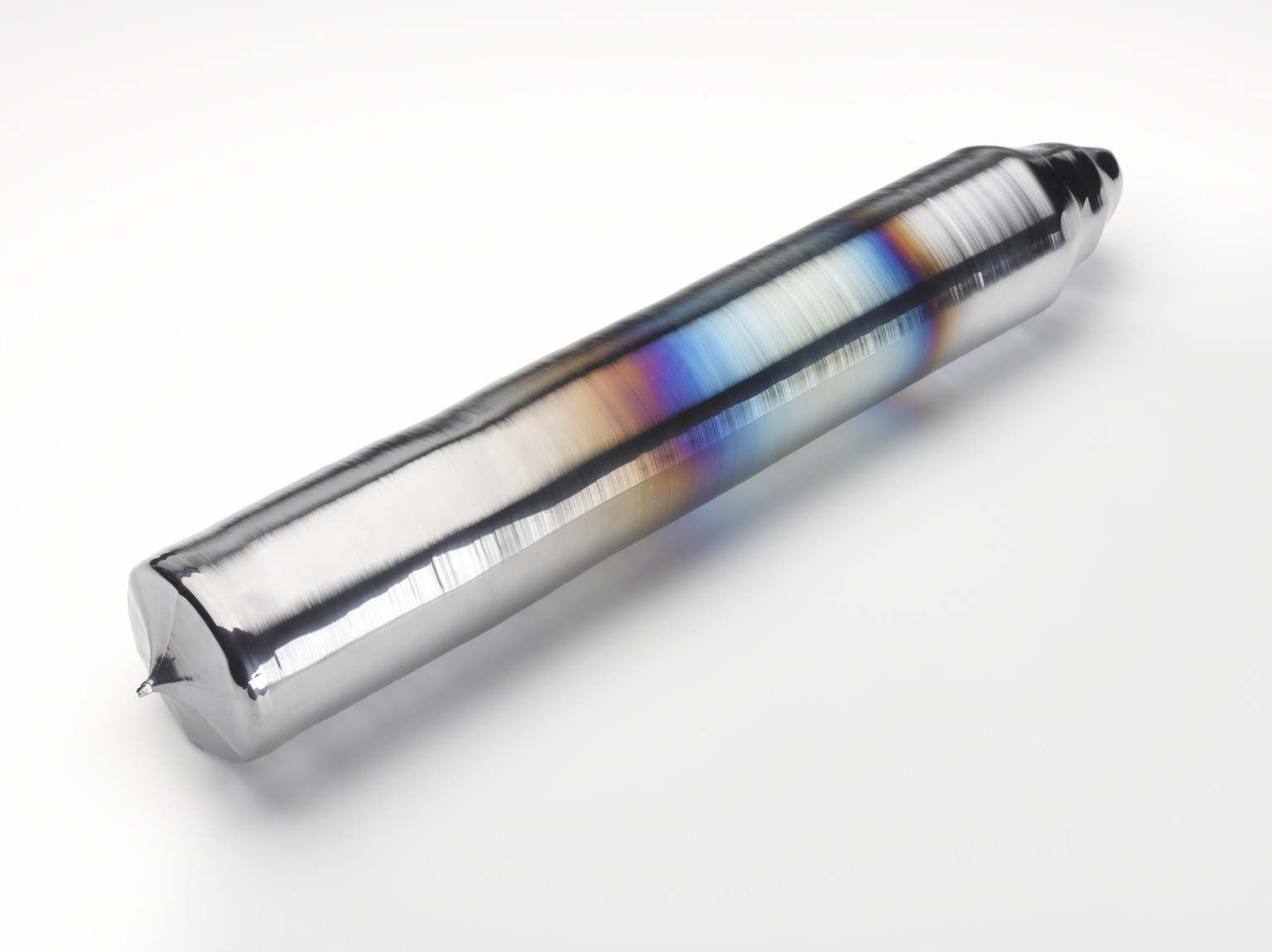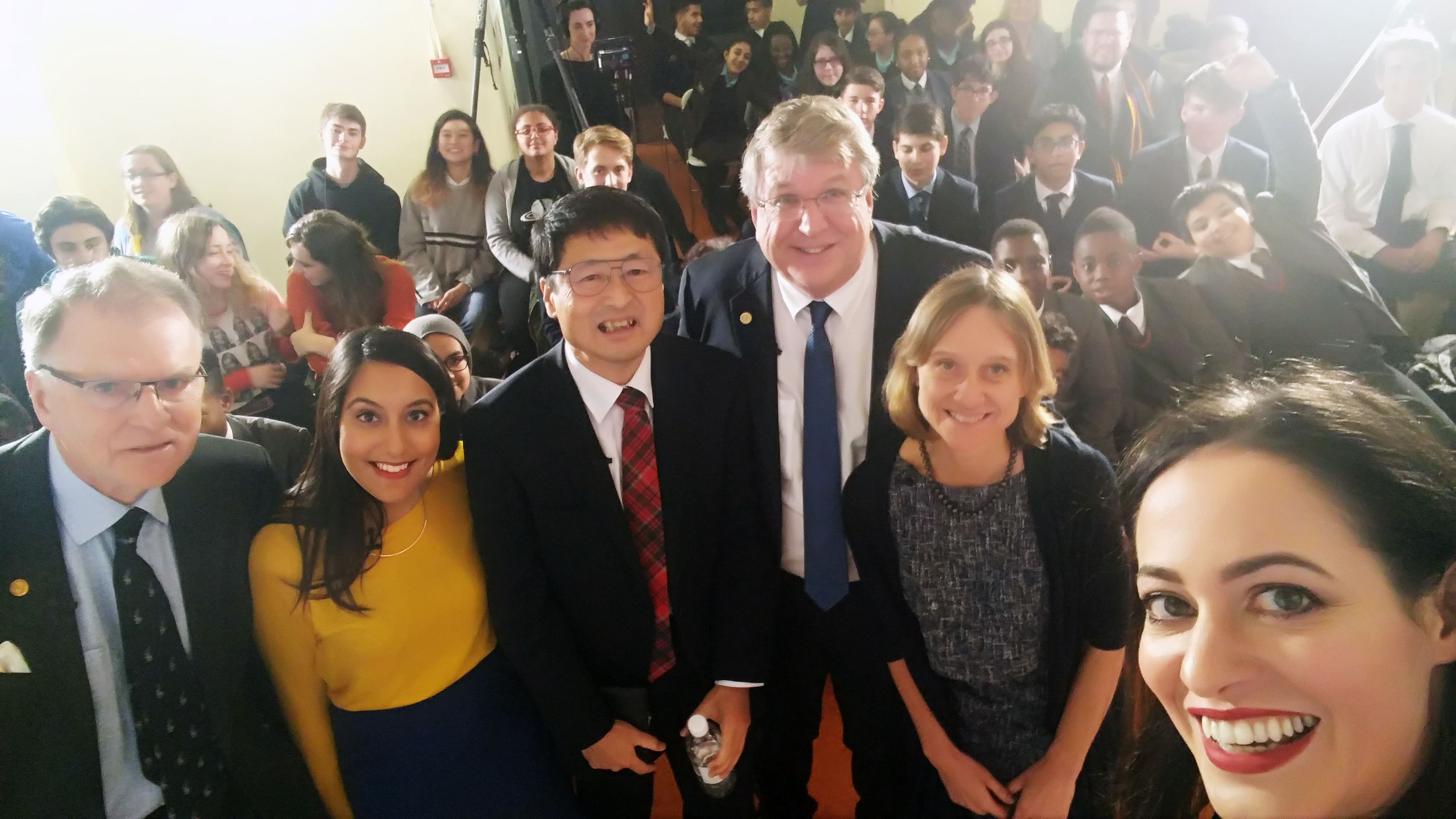The winners of the world’s most prestigious engineering award, the Queen Elizabeth Prize for Engineering, were joined this week by more than a hundred budding engineers at the Science Museum. Just the day before, they had been presented the 2017 QEPrize by HRH The Prince of Wales, in a ceremony at Buckingham Palace.
Michael Tompsett, Eric Fossum and Nobukazu Teranishi are celebrated for revolutionising the way we see and capture the world around us. Together with the work of George Smith, their inventions have led to the digital imaging sensors that we use every day in cameras and smartphones around the world.

They have allowed us to explore the human body right down to individual cells and have brought us images from the very furthest reaches of space. And of course, they have made the ‘selfie’ possible.
The story began more than three decades ago, without a photograph in sight.
New Jersey in the swinging sixties was a hotbed of engineering innovation, and George Smith was on the hunt for new ways to improve computer memory.
A distant ancestor of the storage devices we use today, his solution was the ‘charge coupled device’, or CCD. The device moves electrical charges across a silicon chip, before storing the pulses of electricity as digital data – a series of ones and zeros.

Michael Tompsett, who was working in the same lab, immediately saw the potential of George’s invention for imaging, developing the first CCD image sensor.
Each sensor is made up of light-sensitive cells, called pixels. When light hit this sensor, they cause pixels to release a burst of electricity. The charge coupled device then picks up these electrical signals and transfers them across the surface, before turning them from volts into ‘bits’ and storing the captured image as electronic data.
The pinned photodiode, or PPD, is the second invention honoured by this year’s QEPrize. In the 1980s, Nobukazu Teranishi was working for the NEC corporation in Japan, experimenting with semiconductors. The semiconductor that led to his invention is the diode, a device that forces electrical current to flow in one direction only- rather like a one-way valve. A photodiode does this when it is exposed to light, and is made of a semiconducting material like silicon.
Nobu’s pinned photodiode for CCD image sensors is far more efficient than regular photodiodes. It reduces the ‘noise’ and grainy effects in darker photographs and gives crisper, sharper images.
Its improved quality meant that the size of light-sensing pixels in CCD sensors could be reduced, and more pixels could be packed into the same area. With more pixels capturing more information, Nobu’s PPD allowed cameras to take much higher resolution, better quality images.
The final piece of the imaging puzzle was dropped into place by Eric Fossum and his colleagues at NASA. The 90s at NASA were characterised by then administrator Daniel Goldin’s, ‘faster, better, cheaper’ approach to spacecraft design. Mike and Nobu’s technology was already being used in space, however, the high- energy cosmic particles in space often damaged the delicate image sensors.
In a bid to improve their design, Eric brought together several earlier concepts, shrinking them into a new device. The Complimentary Metal Oxide Semiconductor, or CMOS sensors, can now be made much smaller and consume around 100 times less power than CCD imagers.
This means that not only do they reduce the weight of payloads being launched into space, cutting fuel costs, but they drain less power from the spacecraft and even need less protection from cosmic radiation.
Back on Earth, CMOS sensors are much cheaper to produce than CCDs and have a much longer battery life, making them perfect for commercial cameras. In recent years, their low cost and easy availability means that cameras are a feature of almost all mobile phones, and many of us will have a digital camera at home as well.
Every second of the day, every day of the year, around 50 cameras are made with CMOS sensors.
At a special event this week in the Science Museum, the 2017 QEPrize winners addressed school students from across London. Hosted by LJ Rich, a musician, inventor and presenter of BBC Click, the panel was completed by ‘Rocket Woman’ Vinita Marwaha Madill and biomedical imaging expert, Professor Alison Noble.

Alongside telling the story of imaging sensors, the panel explored the limitless applications that are helping to transform our world. From the tiny pill cameras that let us peek inside the human body and ‘augmented reality’ operating theatres, to weather stations in space and Google Maps aboard the ISS, digital imaging sensors have impacted every aspect of our lives on, and off, our planet.
Following the discussion, students had the chance to quiz the world’s leading engineers themselves, exchanging views on everything from discovering the selfie to preventing the rise of sentient robots!
To find out more about the QEPrize winners and their innovations, head over to the QEPrize website or join in the conversation on Twitter.
